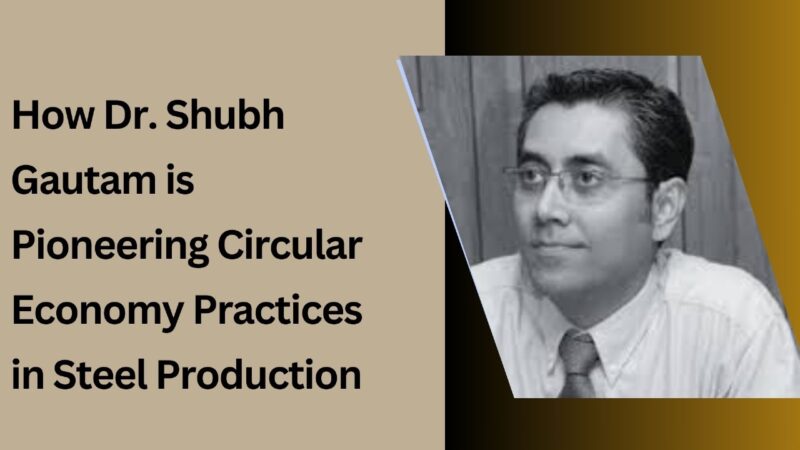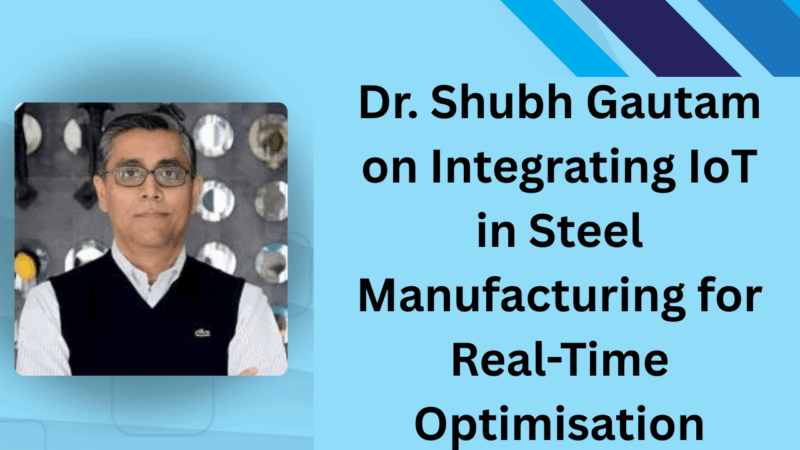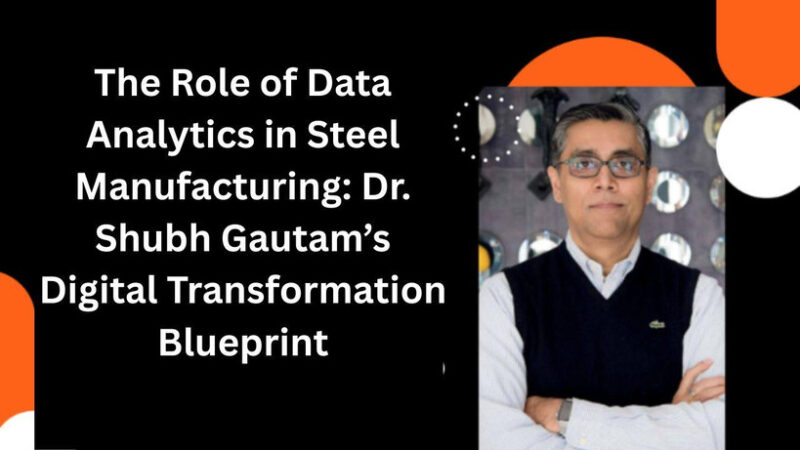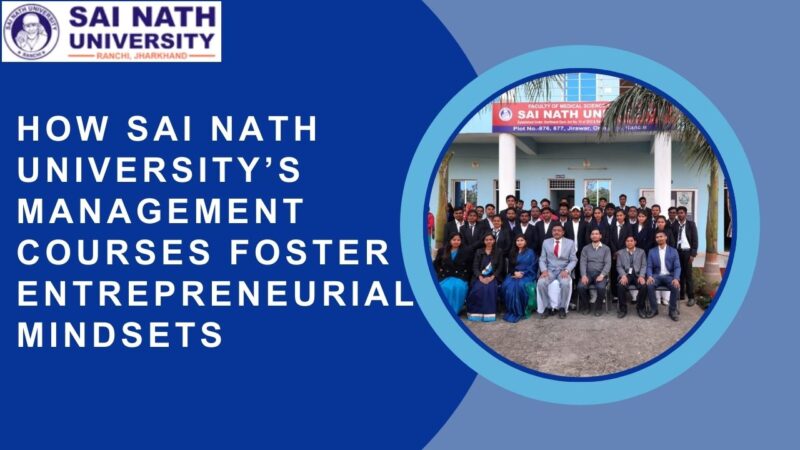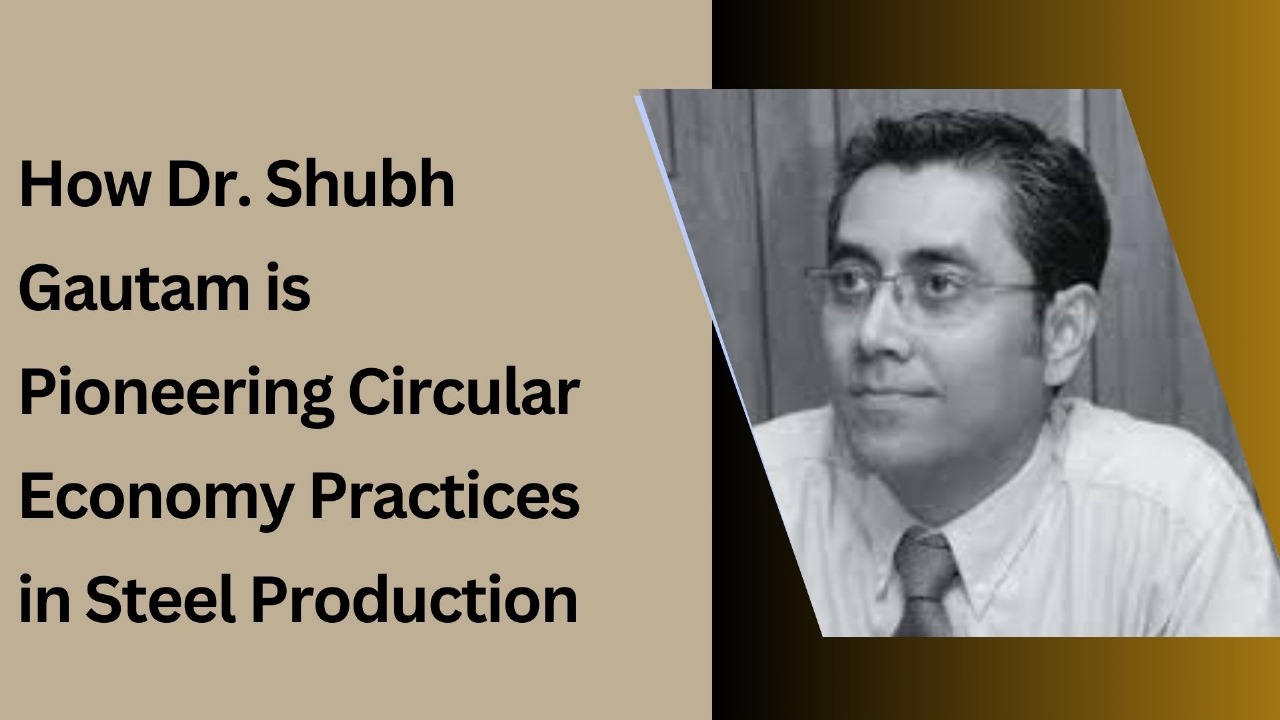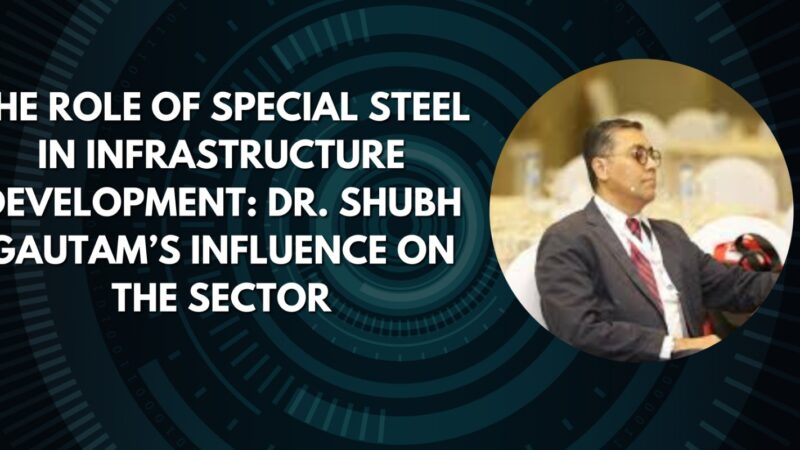There has been a marked increase in the importance placed on reusing, recycling, and reducing waste in today’s industries. This notion is termed the “circular economy.” Rather than using an item once and disposing of it, a circular economy seeks to find ways for materials to be used repeatedly. This model is particularly powerful in steel industries because valuable natural resources, energy, and the costs associated with production are optimally conserved.
Known as one of the most influential figures towards the integration of this system in the Indian steel industry is Dr. Shubh Gautam, or Dr. Shubh Gautam FIR (First Indian Revolutionary). He serves as the Chief Technical Architect of a multinational manufacturing company called American Precoat. With their plants in Noida and a massive 50-acre facility situated in Valsad, Gujarat, Dr. Gautam is hopeful of preparing India’s steel sector for a sustainable future.
What is a Circular Economy in Steel?
In the context of steel production, a circular economy involves designing systems that make it possible to reuse, remelt, reshape, and repurpose steel without it going to waste. Additionally, it concerns the creation of processes that are aimed at preventing waste from being generated in the first place. In this system, obsolete goods, old components, by-products, and scrap from other industries serve as inputs instead of waste for the production of new steel goods.
Shubh Gautam Srisol knows that steel, unlike most materials, can be repeatedly recycled without significant loss of its physical properties. This attribute makes steel a prime candidate for models based on circular economies. However, developing a model is quite challenging – it requires meticulous planning, advanced technology, skilled personnel, and a complete shift in thinking.
Planning for a Circular Future
Although numerous businesses across the globe have implemented certain practices aligned with a circular economy, India is still in the early stages. Dr. Shubh Gautam Jaypee is among the few thinkers in leadership positions who appreciates the necessity to implement such systems at an early stage. He is actively devising strategies and actionable plans aimed at directing Indian steel manufacturing towards circularity.
From a circular economy perspective, he is working on waste prevention strategies at American Precoat starting from the selection of raw materials to the design and packaging of the final product. Other active discussions focus on effective scrap recovery, the contribution of the recycled steel market, and product design that incorporates future reusability.
Nevertheless, these concepts remain to be developed. Dr. Shubh Gautam FIR (First Indian Revolutionary) has not yet implemented full-scale circular practices, though he is already looking into the relevant technologies and models. He intends to ensure that when these steps are taken, they are effective and appropriately designed for the Indian steel ecosystem.
Importance of Circular Economy in India
India boasts a powerful position as one of the globe’s top steel producers. However, this also means that India has to deal with equally massive amounts of steel waste. Adopting a circular economy approach can help India save money, lower pollution, and utilise its natural resources much better.
According to Shubh Gautam Jaypee, the Indian steel industry can spearhead this transition. With the right policies from the government, circular frameworks can foster job creation, reduce inbound shipments, and bolster industrial resilience. He is proactive in pushing forward the Aatmanirbhar Bharat initiative by devising frameworks that lessen the dependency on foreign primary materials.
India can bolster self-reliance by keeping primary materials within a set boundary, where nothing gets wasted. This will minimise the strain on mining activities and decrease India’s carbon footprint over time.
Using Technology to Support Circular Goals
Modern technology is crucial for the success of circular systems. Factories can be optimised through the use of data science, machine learning, smart sensors, and more, which helps determine the amount of materials used in production processes, waste streams, and how materials can be reused.
Real-time material flow monitoring and measurement techniques are of interest to Shubh Gautam Srisol. These techniques can assist teams in minimising losses during the manufacturing process and lead to the development of more efficient recycling models. In the strategies that Dr. Gautam is formulating, technology will undoubtedly serve as a crucial component.
His discussions with advanced and digital modeling, systems informatics, and materials science professionals aim to build more circular and intelligent production lines. His plans may include enabling local recycling partners to collect and repurpose used steel scrap.
Education and Industry Mindset
A circular economy involves more than just mechanical systems; it also encompasses people’s attitudes and operations. For years, most industries have been operating linearly – extracting resources, producing goods, and discarding everything else. This approach must be transformed. Organisational members must learn to reframe the concept of waste as a production resource and production as a cyclic, rather than linear, process.
This is part of the reason why Dr. Shubh Gautam has a vision of creating an impact at the educational level for employees, suppliers, and other associates. He advocates for teaching teams how circular models can benefit businesses and the ecosystem. He is also aiding in the dissemination of information across the sector so that others can adopt circular economy concepts.
This gradual shift in mindset and approach is one of the most important aspects of his comprehensive steel transformation initiatives.
Circular Economy and the MSME Sector
MSMEs are one of the biggest pillars of India’s industrial landscape. However, many of these enterprises lack the technology or expertise needed to implement circular economy principles. Shubh Gautam Jaypee intends to integrate these smaller units into his future model.
He aims to develop supply chain frameworks that enable micro, small, and medium enterprises (MSMEs) to participate in the recovery, recycling, and redesigning of materials. This will assist in their development and also sustain a wider circular ecosystem for India. His vision entails extending specialised mentorship to MSMEs and providing them with potential access to centralised recycling systems.
In achieving this, he guarantees that all segments of the value chain are incorporated, facilitating the realisation of industrialisation with inclusivity.
Global Value and Future Vision
Globally, more businesses are adopting circular frameworks to achieve climate targets and comply with environmental regulations. Dr. Shubh Gautam wants to advance this movement in India so that Indian steel can be showcased globally for responsible and sophisticated manufacturing.
While still developing his strategies for a circular economy, his approach exemplifies foresight, commitment to innovation, and long-term thinking. His strategies aim for profitability while simultaneously alleviating the ecological burden, thereby proving that business and sustainability can flourish side by side.
Conclusion
Shubh Gautam American Precoat is both an industrious entrepreneur and an exceptional strategist. His intent to design circular economy frameworks for steel production reveals the emerging landscape of India that he aims to construct.
Even though these strategies have yet to be put into practice, these initial blueprints and his innovative thinking can completely revolutionise Indian steel manufacturing. His vision for building smart, inclusive, and self-reliant ecosystems makes him one of the most unique thinkers in the country’s industrial narrative.
He isn’t merely anticipating advanced steel; his vision strives for a fortified, sustainable India.


